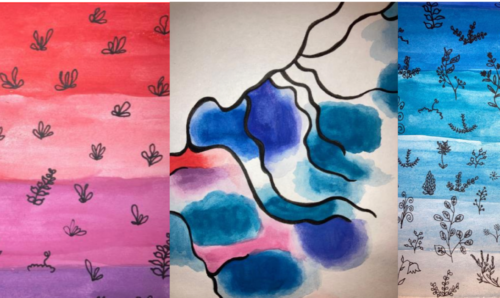Science, space and singalongs: A stellar day at Bluedot
UOM life 1st August 2022
“Welcome back to Bluedot,” declares Professor Tim O’Brien. “We’ve made it!”
After a COVID-enforced three-year break, the unique and mesmerising festival – an out-of-this-world celebration of music, science and cosmic culture – has returned.
And how.
A triumphant, carnival atmosphere, awash with colour and cheer. Try as it might, not even the rain could dampen the party spirit.
The event, of course, is intrinsically linked to The University of Manchester. It’s held at stunning Jodrell Bank, one of the University’s celebrated cultural assets, and our experts are to be found across site, demonstrating the wonder – and brilliance – of science.
What better excuse, then, for us at The Hub to pull on our wellies, grab our cameras and head towards the action?

Science at every turn
We attended on the Friday, and it didn’t take long to spot familiar faces from the Faculty of Science and Engineering.
Our friends from Graphene@Manchester were teaching wide-eyed festival-goers all about the potential of graphene and 2D material applications; excitable children settling down to carefully piece together molecular models of their own.
Colourful games and photo stand-ins proved hugely popular at the Dalton Nuclear Institute stand, where enthusiastic exhibitors discussed nuclear energy for net zero; while the Earth and Solar System tent proclaimed ‘science rocks!’, detailing everything from meteorites to planets, the moon to the Solar System.
The University of Manchester Physics Outreach (UMPO) team, meanwhile, had younger visitors enthralled with its science busking tent, boasting paddling pool, giant colourful balls and more.
And it was in the huge blue and white tent, fittingly called Mission Control, where things started to really take off – as Manchester scientists took to the stage…
Volume up; carbon down
Aptly for a festival hosting iconic acts such as Bjork and Mogwai, Dr Chris Jones‘s talk was all about live music. Specifically, its carbon impact – and what we can do to reduce it.
Dr Jones is part of the Tyndall Centre for Climate Change Research, and he updated the attentive crowd on a unique partnership the centre has forged with much-loved trip hop collective Massive Attack. It’s a fascinating and game-changing project, one we’ve covered before on The Hub through our interview with Director of Tyndall Manchester Professor Carly McLachlan.
“I’m normally behind spreadsheets,” Dr Jones joked, as he addressed the growing audience. Comprised, no doubt, of music fans keen to do their bit to lessen the carbon footprint of the events they love.
Festivals, after all, are like mini, pop-up cities. And they require – for a brief spell – power where it’s not normally needed. The focus for Tyndall and Massive Attack is on how bands get to where they’re going, what happens when they’re there, and the impact of audience travel.
Dr Jones explained how the project has produced a roadmap for the whole industry to follow – but also warned that nothing can happen individually. Promoters, fans, travel operators, venue owners and more, they’ve all got a part to play.
And big challenges lie ahead.
In order to end fossil fuel use at festivals, make it easier to travel by bike, train and bus, encourage lower-mileage tours, and move less equipment, there has to be collaboration. There needs to be the finance – and there needs to be help for smaller venues too.
It’s just the beginning, but the forward-thinking minds at Bluedot seem a good place to start.
‘Pus, pee and LFTs’
Professor Sheena Cruickshank, of the University’s Division of Infection, Immunity and Respiratory Medicine, took us back through time for her engrossing talk on the development of antibodies and vaccines.
And she certainly put the ‘gross’ in ‘engrossing’ when explaining the incredible ways in which we’ve reached where we are now – with a focus on the COVID-19 lateral flow tests (LFTs) we all know so well.
Professor Cruickshank took us right the way back to Ancient Egypt and the horror of smallpox to tell the grisly tale of how spot squeezing, lancing and juice collecting would lead to variolation, immunity and inoculation. “The juice of smallpox: the nastiest smoothie you could ever imagine,” she teased the squirming crowd.
The captivating discussion guided us through important names in the development of vaccinations, including Edward Jenner and Luis Pasteur, as well as the ‘pee prophets’ whose work would, ultimately, lead to the development of pregnancy tests.
Importantly, Professor Cruickshank shined a light on the huge contributions of women.
Lady Mary Wortley Montagu, for example, played a crucial role in highlighting the benefits of inoculation in the 18th century, while Margaret Crane invented the first at-home pregnancy test in 1967.
On the brain
Matthew Cobb, Professor of Zoology at Manchester, also transported us to the past. This time, it was all about the brain.
We all know the importance of the brain, right? It is – of course – what controls thought, emotion, memory and more.
But, did we always know that?
Apparently not.
Professor Cobb’s absorbing talk explained how we used to believe the heart was, in fact, the organ for such functions, and walked us through a captivating history including famous names such as Aristotle, Descartes, Shakespeare and Mary Shelley to demonstrate how we moved from uncertainty about the heart to – finally – appreciation of the brain.
Electric dogs, maggots and lobster stomachs all played a part in the transfixing story, as did a roll-call of the scientists who’ve made remarkable breakthroughs in this once-misunderstood area of science.
Intriguingly, Professor Cobb pointed out how we use technological metaphors to describe the brain – from telephone switchboards to supercomputers – and how changing technology will, almost certainly, continue altering how we imagine it.
Looking further than ever before
As his quote opened this blog post, Professor Tim O’Brien also ‘opened’ the festival itself, with his beguiling Welcome Back to Bluedot talk.
Professor of Astrophysics at the University and Associate Director of the Jodrell Bank Centre for Astrophysics, Professor O’Brien co-curates the science content at Bluedot alongside Professor Teresa Anderson. His address came beneath the iconic Lovell Telescope, on the huge Lovell Stage, and he guided the spellbound crowd through the incredible developments at Jodrell and beyond in the years since the festival was held last.
He showed spectacular telescope images of the great unknown, including – of course – remarkable first images captured by the astounding James Webb Space Telescope. Producing the deepest and sharpest pictures of the distant universe to date, the images offer a glimpse into the future of astrophysics.
The future, indeed, of science.
A future the scientists of Bluedot – and of course Manchester – are helping to create.
If you enjoyed this post, be sure to subscribe on our homepage to keep up to date with the latest posts from The Hub.
Words: Joe Shervin
Videos: Kory Stout




